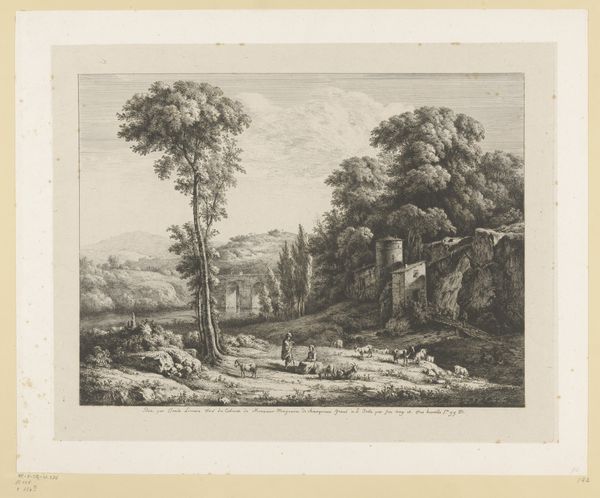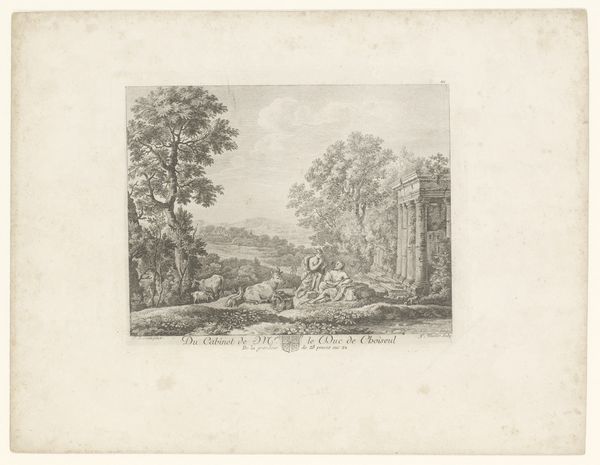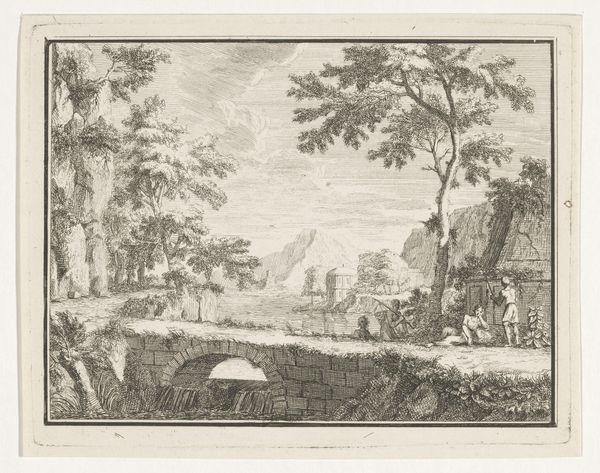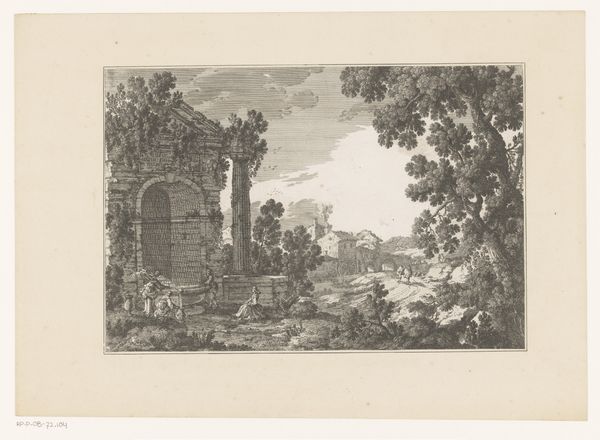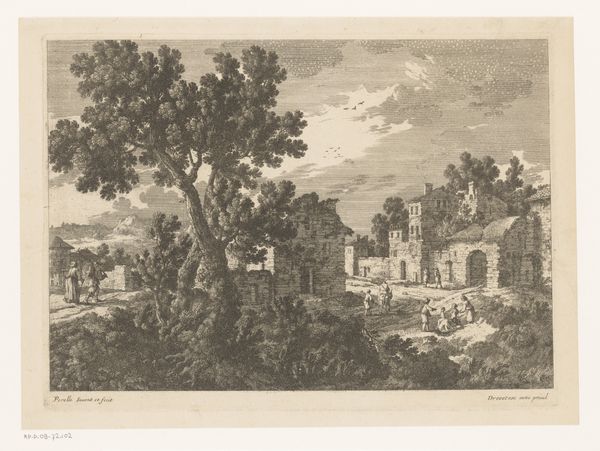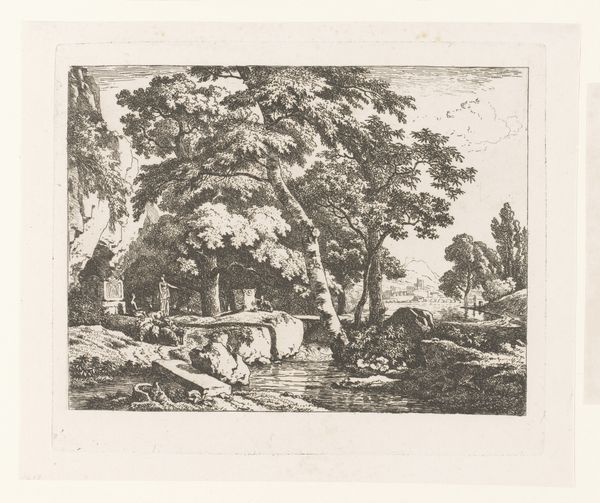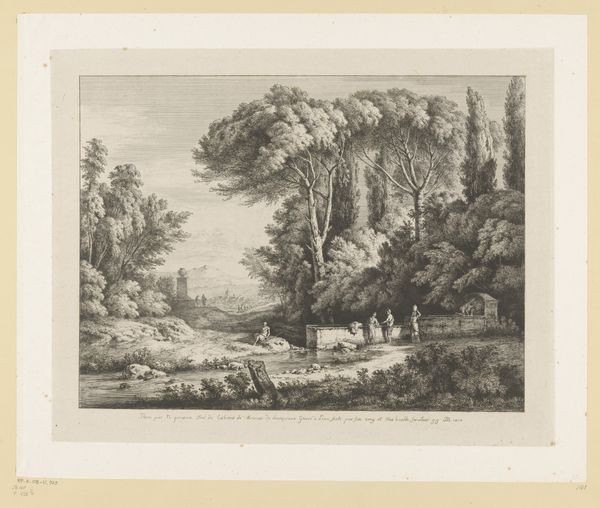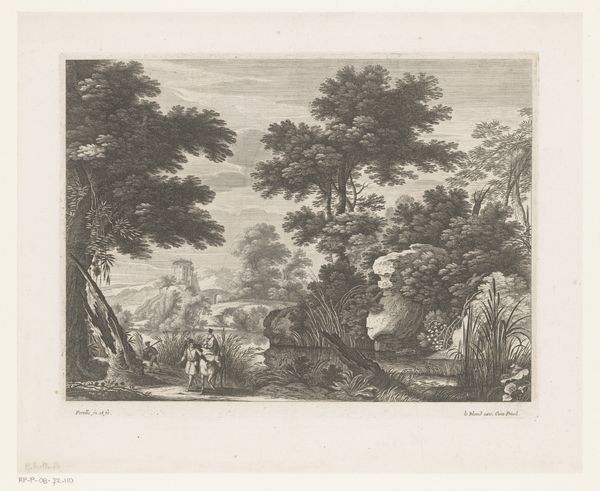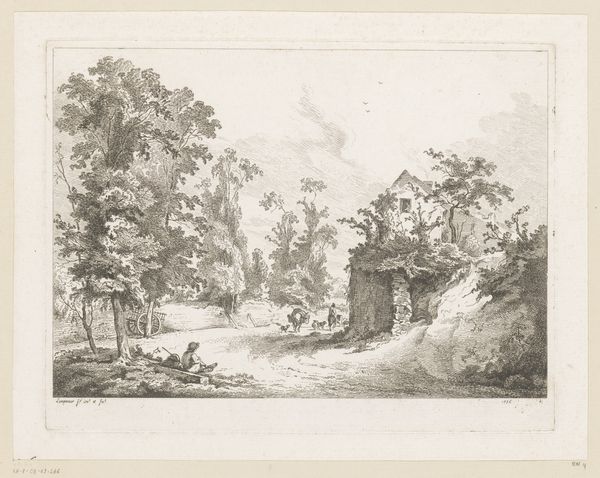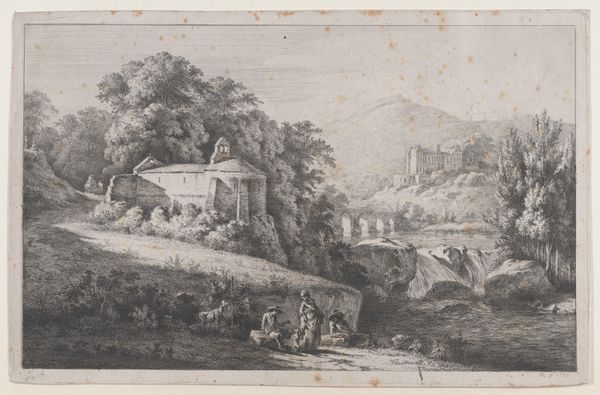
print, etching, engraving
#
neoclacissism
# print
#
etching
#
landscape
#
engraving
Dimensions: height 353 mm, width 452 mm
Copyright: Rijks Museum: Open Domain
Curator: Before us, we have "Landschap met figuren op een stenen brug," or "Landscape with figures on a stone bridge," an etching and engraving crafted in 1799 by Jean Jacques de Boissieu. Editor: It's...utterly charming. Gives off that tranquil, almost dreamlike quality you find in pastoral scenes. The light feels filtered and the detail in the foliage is extraordinary for a print. It’s really delicate. Curator: Indeed. Boissieu’s technical skill is evident. Notice how the contrast isn't just about light and shadow; the cross-hatching modulates space and texture to suggest a highly formalized naturalism. The figures aren't merely placed but positioned relative to the geometries within the landscape. Editor: Right. It's more ordered, more... composed than how I would feel on that bridge, say. I'd want a touch of the wild. But I get it: it is about creating a certain type of order and idyllic harmony. You’ve got the dogs, the figures resting, livestock grazing… It's a balanced depiction. A bit staged perhaps, though, you think? Curator: "Staged" might not be the right descriptor. Better to frame it as a sophisticated synthesis. Think about it. Boissieu integrates principles of neoclassicism, reflecting an interest in reason and structured beauty, with the prevailing Romantic interest in landscape. Look at the bridge itself - the rigid geometry mediating the organic world around it. Editor: That tension definitely gives it some buzz, a hidden push-pull, maybe. The textures, I want to talk about those. Look how the water isn't just still, it feels viscous and kind of deep under that arched bridge. The way it plays with reflected light... I almost feel the cool air and the moisture just off the river. He makes an inanimate object – a bridge of all things – breathe life and mystery into this landscape. That kind of makes the perfection digestible, somehow. Curator: Absolutely. By playing with these contrasts of rational design and organic fluidity, and controlling the visual planes, the viewer is gently guided throughout the picture in a manner to reinforce the intellectual content alongside the pictorial beauty. Editor: So, from a structural game, he crafts what, to the modern eye, comes across as genuine feeling. That’s a nifty feat, especially given its Neoclassical underpinnings. Curator: Yes, Boissieu elevates the landscape format via precision and deliberate composition. Editor: It’s making me rethink the power held in that kind of calculated perspective. It can feel unexpectedly personal when executed as elegantly as this.
Comments
No comments
Be the first to comment and join the conversation on the ultimate creative platform.
